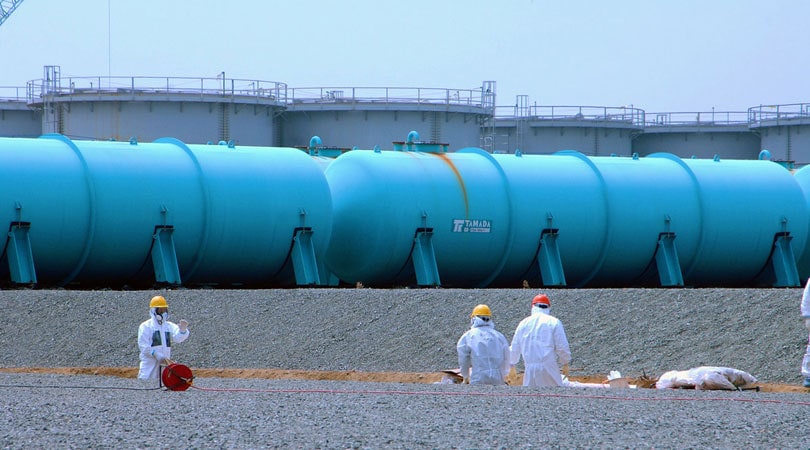
An excess of contaminated water at Fukushima nuclear plant owned by Tokyo Electric Power is holding up progress on environmental clean-up of the site. Japan is resuming efforts to consider options to remove the water.
According to briefing documents from Japan’s government, a panel of experts met on August 9, 2019, to review options for cleaning the water and dispersing it.
Strategies considered include evaporation of the water and injection deep underground. A more conventional, but controversial, option recommended by Japan’s nuclear regulator is to release the treated water into the ocean.
The panel had ceased meeting after Tokyo Electric (TEPCO) admitted it had not entirely cleaned dangerous radioactive particles from the treated tank water. This is the first meeting of the panel in 8 months.
This admission was a setback for the company and Japan’s government as well as for the environment. The tainted water hindered planned clean-up of the site where three reactors melted down after an earthquake and tsunami in 2011. It was the world’s worst nuclear disaster since Chernobyl in 1986.

Total cost estimates for dismantling the plant, decontaminating affected areas and other compensation would be about 21.5 trillion yen (203 billion dollars), about one-fifth of the country’s annual budget, according to the government of Japan in 2016.
Six years ago, Prime Minister Shinzo Abe declared that the Fukushima disaster site was “under control” as part of his pitch to the International Olympic Committee. Tokyo won the bid to host the 2020 Summer Olympic Games.

Typically, radioactively contaminated water is cleaned to remove all radioactive particles except tritium, a relatively harmless isotope of hydrogen which is difficult to separate from water particles. Once water is treated, it is released into the environment.
However, because of last year’s admission that radioactive particles were not removed from tank water, regional fishermen are opposing the release of the water into the ocean. Other countries, including South Korea, continue to restrict sales of produce from farmland around the Fukushima site.
TEPCO is also running out of tank space and is expected to be out of space by mid 2022. This adds to the urgency to complete the clean-up.
